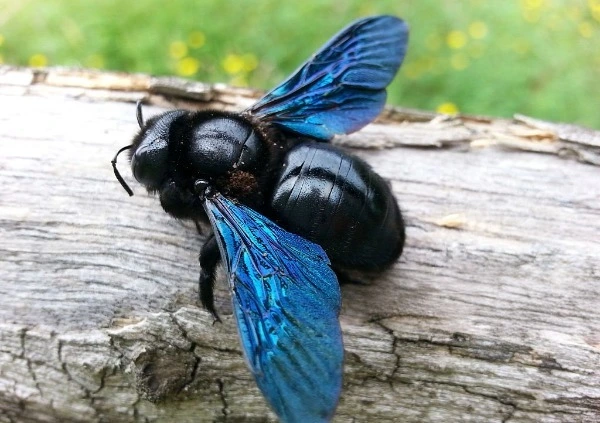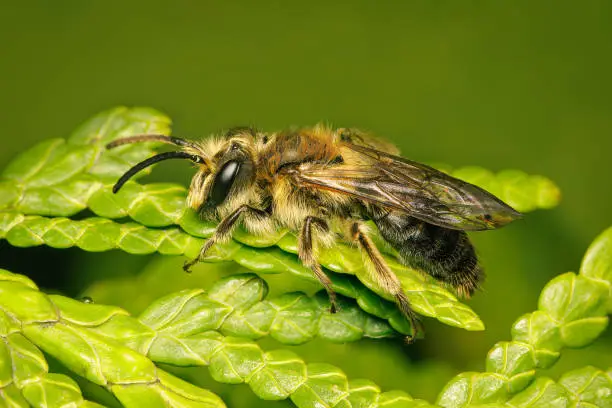Italian Queen Bee
The Italian Queen Bee, a distinguished subspecies of the honeybee (Apis mellifera), stands as a beacon in the world of beekeeping, renowned for its remarkable characteristics and contributions to apiaries worldwide. Originating in Italy, this queen bee has earned its place as a preferred choice among beekeepers for several compelling reasons.

As the matriarch of a honeybee colony, the Italian Queen Bee plays a pivotal role in influencing the hive’s behavior, productivity, and overall health. In this article, we will delve into the origins, physical attributes, and behavioral traits that make the Italian Queen Bee a coveted figure in the art and science of beekeeping.
Historical Background:
The rich history of the Italian Queen Bee traces its roots back to the picturesque landscapes of Italy, where beekeepers first recognized and selectively bred these remarkable insects for their unique qualities. The story begins in the late 19th century when pioneers in apiculture sought to enhance the characteristics of honeybee colonies for better productivity and adaptability.
Selective Breeding in Italy:
Italian beekeepers, known for their deep connection with nature and meticulous beekeeping practices, embarked on a journey of selective breeding. They identified colonies with desirable traits such as gentleness, strong foraging abilities, and prolific honey production.
Through careful breeding practices, they cultivated a distinct population of honeybees, eventually giving rise to what we now know as the Italian honeybee.
Introduction to Various Regions:
The widespread reputation of the Italian Queen Bee soon transcended the borders of Italy. In the early 20th century, bee enthusiasts and commercial beekeepers recognized the value of these bees and sought to introduce them to various regions around the globe.
The Italian honeybee found a new home in countries with diverse climates, from the warm Mediterranean regions to temperate zones and even areas with colder climates.
Global Adoption:
The adaptability of the Italian Queen Bee played a crucial role in its global adoption. As beekeepers observed the positive traits of Italian colonies, including their docility, strong work ethic, and resistance to certain diseases, the demand for these bees grew exponentially.
Physical Characteristics of the Italian Queen Bee
| 1. Color |
| – Striking golden-yellow to light amber color |
| – Consistent coloration across abdomen, thorax, and head |
| 2. Size |
| – Slightly larger than worker bees |
| – Elongated body adapted for reproductive role |
| – Size facilitates easy identification |
| 3. Markings |
| – Small, colored dots on the thorax |
| – Color-coded system aids in tracking queen’s age |
| 4. Wing Structure |
| – Clear wings slightly shorter than body length |
| – Intricate venation for flight and maneuverability |
| 5. Behavior and Pheromones |
| – Gentle disposition, less prone to aggression |
Italian queen bee lifespan
Average queen life is 2-5 years. Workers live a few weeks to a few months. Pesticides – bees interact with the chemicals that are applied to plants and these chemicals interfere with their nervous systems, causing paralysis and eventually death
Behavioral Traits of Italian Queen Bees
Italian Queen Bees are esteemed not only for their distinctive physical features but also for their remarkable behavioral traits. These characteristics play a crucial role in the overall health, productivity, and manageability of the honeybee colony.
1. Gentleness
Italian Queen Bees are renowned for their gentle demeanor. They exhibit a calm and less aggressive temperament compared to some other honeybee subspecies. This gentleness is particularly advantageous for beekeepers during hive inspections and manipulations, as it reduces the likelihood of defensive behavior.
2. Productivity
Italian Queens are associated with high levels of productivity within the hive. They possess a strong laying pattern, meaning they consistently lay a significant number of eggs. This trait contributes to the rapid expansion of the honeybee colony and enhances overall honey production.
3. Hygienic Behavior
Italian Queen Bees demonstrate a notable commitment to hive hygiene. They actively participate in maintaining a clean and disease-resistant environment.
This hygienic behavior involves identifying and removing diseased or deceased brood, contributing to the colony’s health and resilience against common bee diseases.
4. Brood Rearing Efficiency
Italian Queens are adept at efficient brood rearing. They carefully manage the timing and placement of eggs, larvae, and pupae within the honeycomb cells. This strategic brood-rearing contributes to a robust and well-organized colony structure.
5. Adaptability
Italian Queen Bees showcase adaptability to various environmental conditions. Whether in warm Mediterranean climates or temperate regions, Italian colonies can thrive. This adaptability makes them suitable for beekeeping operations in diverse geographic locations.
6. Resistance to Diseases
While no honeybee subspecies is entirely immune to diseases, Italian Queens exhibit a degree of resistance to certain common bee ailments. This resistance enhances the overall health and longevity of the colony.
7. Communication Through Pheromones
Italian Queens play a vital role in hive communication through the release of pheromones. These chemical signals influence the behavior and activities of worker bees, contributing to the cohesion and functionality of the entire colony.
Beekeeping Advantages of Italian Queen Bees
| 1. Excellent Honey Production |
| – Robust laying pattern enhances colony size and foraging activity |
| – Diligent worker bees contribute to abundant and high-quality honey |
| 2. Strong Colonies |
| – Efficient brood rearing and strategic egg-laying patterns |
| – Hygienic behavior ensures a healthy and harmonious hive |
| – Resilient colonies are more capable of withstanding environmental challenges |
| 3. Adaptability to Various Climates |
| – Thrives in warm Mediterranean regions as well as temperate zones |
| – Demonstrates adaptability to diverse environmental conditions |
| 4. Docile Nature for Easy Management |
| – Gentle disposition reduces defensive behavior during hive inspections |
| – Enhances the ease of beekeeping operations and reduces the risk of stings |
| 5. Disease Resistance |
| – Exhibits a degree of resistance to common bee ailments |
| – Contributes to overall colony health and reduces disease-related challenges |
| 6. Efficient Pollination |
| – Strong foraging capabilities contribute to efficient pollination |
| – Adaptability to various floral sources enhances pollination services |
Honey Production by Italian Queen Bees:
The Italian Queen Bee plays a pivotal role in the honey production process, influencing the quantity, quality, and overall characteristics of the honey produced by colonies under her reign.
1. Prolific Laying Patterns
Italian Queen Bees are known for their prolific laying patterns. The queen’s ability to lay a substantial number of eggs contributes to the rapid growth and expansion of the honeybee colony. As the colony population increases, so does the workforce dedicated to foraging for nectar, a key precursor to honey production.
2. Diligent Foraging and Nectar Collection
Italian colonies, led by their industrious Italian Queen, exhibit strong foraging capabilities. Worker bees diligently collect nectar from a diverse range of floral sources.
The varied floral inputs contribute to the unique flavor profile of the honey produced by Italian colonies, as the bees gather nectar from different plants, each imparting its distinct characteristics.
3. Efficient Nectar Processing
Italian honeybees excel in the efficient processing of nectar into honey. Upon returning to the hive, forager bees deposit the collected nectar into honeycomb cells. The Italian Queen’s brood-rearing efficiency ensures a balanced ratio of worker bees engaged in the honey-making process. This streamlined collaboration accelerates the conversion of nectar into honey.
4. Flavor Profile
Honey produced by colonies headed by Italian Queens is renowned for its mild and delicate flavor profile. The honey is often described as light, fruity, and pleasantly sweet. The diverse floral sources contribute subtle nuances to the flavor, creating a well-balanced and highly palatable honey.
5. Quality Assurance
Italian Queen Bees contribute to the overall quality of honey through their hygienic behavior. Their commitment to maintaining a clean hive environment extends to the honeycomb, ensuring that the honey produced is free from contaminants. This dedication to cleanliness enhances the purity and quality of the final product.
6. Consistency in Production
Italian colonies exhibit consistency in honey production. The strong laying patterns of Italian Queens lead to consistently populous colonies, ensuring a stable workforce engaged in foraging and honey-making activities. This predictability is advantageous for beekeepers seeking reliable and regular honey harvests.
FAQs
Why did the Italian Queen Bee gain global recognition?
The Italian Queen Bee’s adaptability, docility, strong work ethic, and resistance to diseases played a crucial role in its global adoption. Bee enthusiasts and commercial beekeepers recognized these positive traits, leading to increased demand worldwide.
what is the difference between carpenter bees and italian queen bee?
Carpenter bees (Xylocopa species) and Italian queen bees differ significantly. Carpenter bees are solitary, burrowing insects, while Italian queen bees lead social colonies, playing a vital role in hive dynamics and honey production
What advantages do beekeepers gain from Italian Queen Bee colonies?
Beekeepers benefit from Italian Queen Bee colonies through excellent honey production, strong and resilient hives, adaptability to various climates, easy management, disease resistance, and efficient pollination services.
What is the difference between Carniolan and Italian queen?
The main differences lie in their origin and color. Carniolan queens originate from the Carniolan region, are darker in color, while Italian queens originate from Italy and have a distinct golden-yellow to light amber color.
What is the difference between Italian queen bee and Russian queen bee?
Italian queen bees are known for their gentle temperament and excellent honey production, while Russian queen bees are recognized for their winter hardiness and resistance to certain pests.
Should I get Italian or Carniolan Bees?
Choosing between Italian and Carniolan bees depends on your priorities. Italian bees are known for high honey production and gentleness, while Carniolans excel in overwintering and adaptability to cooler climates.
How long do Italian queen bees live?
Italian queen bees have an average lifespan of 2 to 5 years, during which they play a crucial role in the hive’s growth and productivity.





